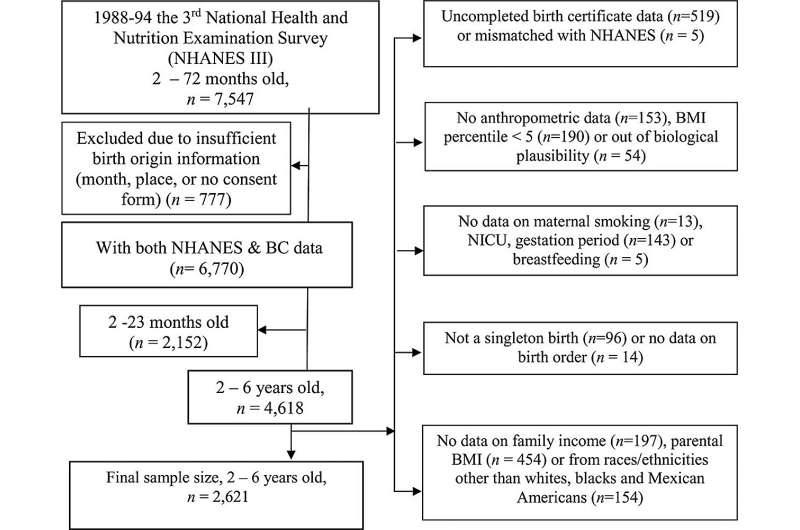This article has been reviewed according to Science X's editorial process and policies. Editors have highlighted the following attributes while ensuring the content's credibility:
fact-checked
proofread
New study links high birth weight to childhood obesity in the US

A new study published in the journal Reproductive and Developmental Medicine has found a strong association between fetal macrosomia (high birth weight) and overweight and obesity in early childhood among the U.S.-born children aged 2 to 6 years.
The study, conducted by researchers from Georgia Southern University, used a retrospective cohort design and analyzed the data collected by the Centers for Disease Control and Prevention (CDC) in the National Health and Nutrition Examination Survey (NHANES) linked with birth certificates.
Unlike previous studies, which normally defined a birth weight of 4,000 grams or more as macrosomia, Georgia Southern researchers took race and gestational age into consider and categorized fetal macrosomia as newborns weighted equal or greater than ≥ 90th percentile of gestational age-race-sex-parity specific bodyweight distribution in 1989 vital statistics, the reference established before obesity epidemic.
The researchers found that children who were born macrocosmic had 1.5 times higher odds of being overweight or obese in early childhood, compared with those who were born with a normal birth weight.
The researchers suggested fetal macrosomia may be a marker of intrauterine overnutrition and metabolic dysregulation, which may predispose children to excess weight gain and obesity later in life. They recommended that prenatal care providers should monitor fetal growth and counsel pregnant women about the potential risks and complications of having a large baby, as well as the importance of healthy lifestyle behaviors for themselves and their children.

This study is one of the first to examine the link between fetal macrosomia and childhood obesity in a nationally representative sample of the U.S.-born children. The findings may have important implications for the prevention and management of obesity and its related chronic diseases in the U.S. population. Preventing in-utero over-nutrition and weight gain during pregnancy could be a promising strategy to break the vicious transgenerational cycle of the obesity crisis and mitigate the risks toward subsequent generations, particularly among the population of colors.
More information: Temitayo Adebile et al, Macrosomia is associated with overweight in childhood: a follow-back of a cohort established in the early years of the obesity epidemic, Reproductive and Developmental Medicine (2023). DOI: 10.1097/RD9.0000000000000067





















